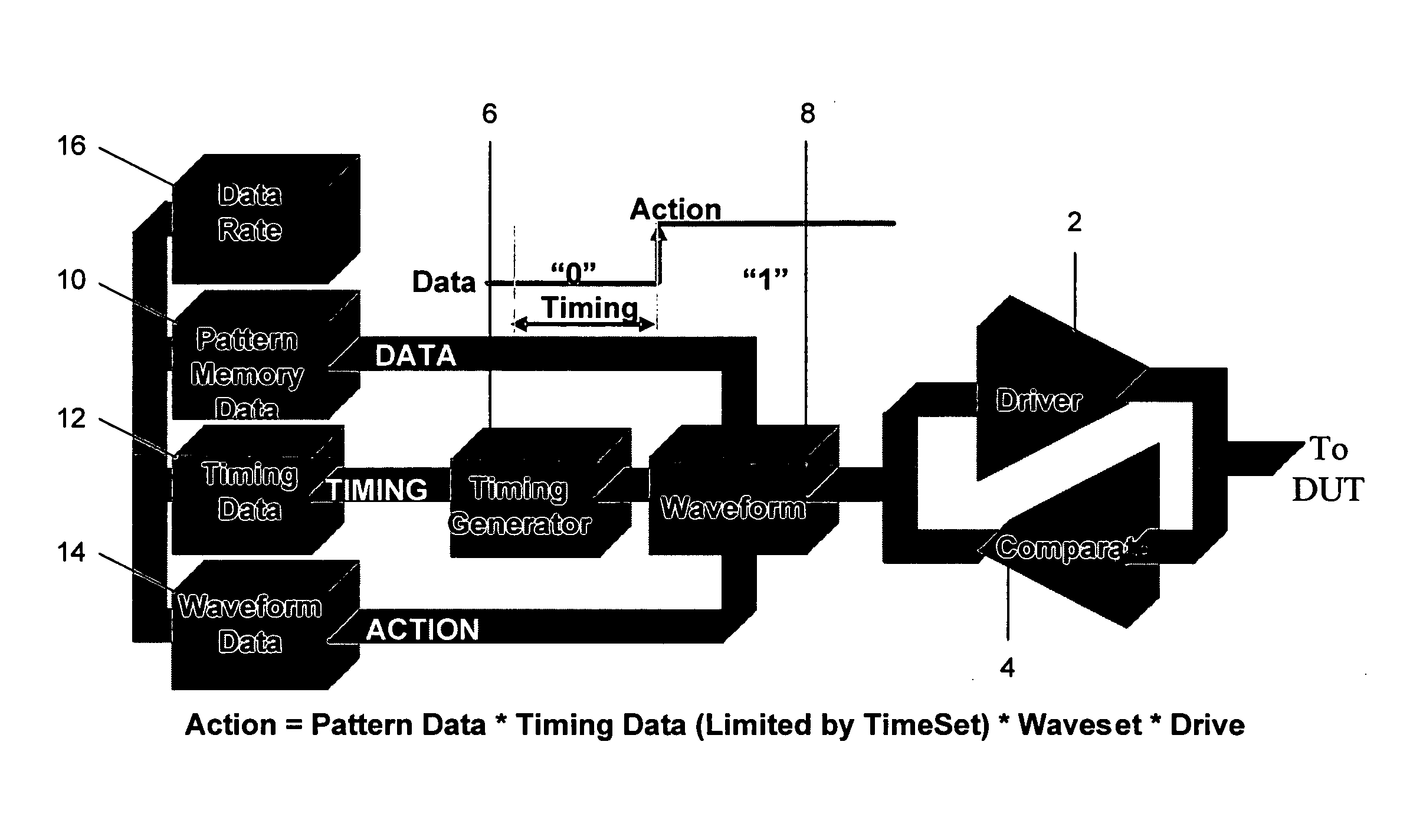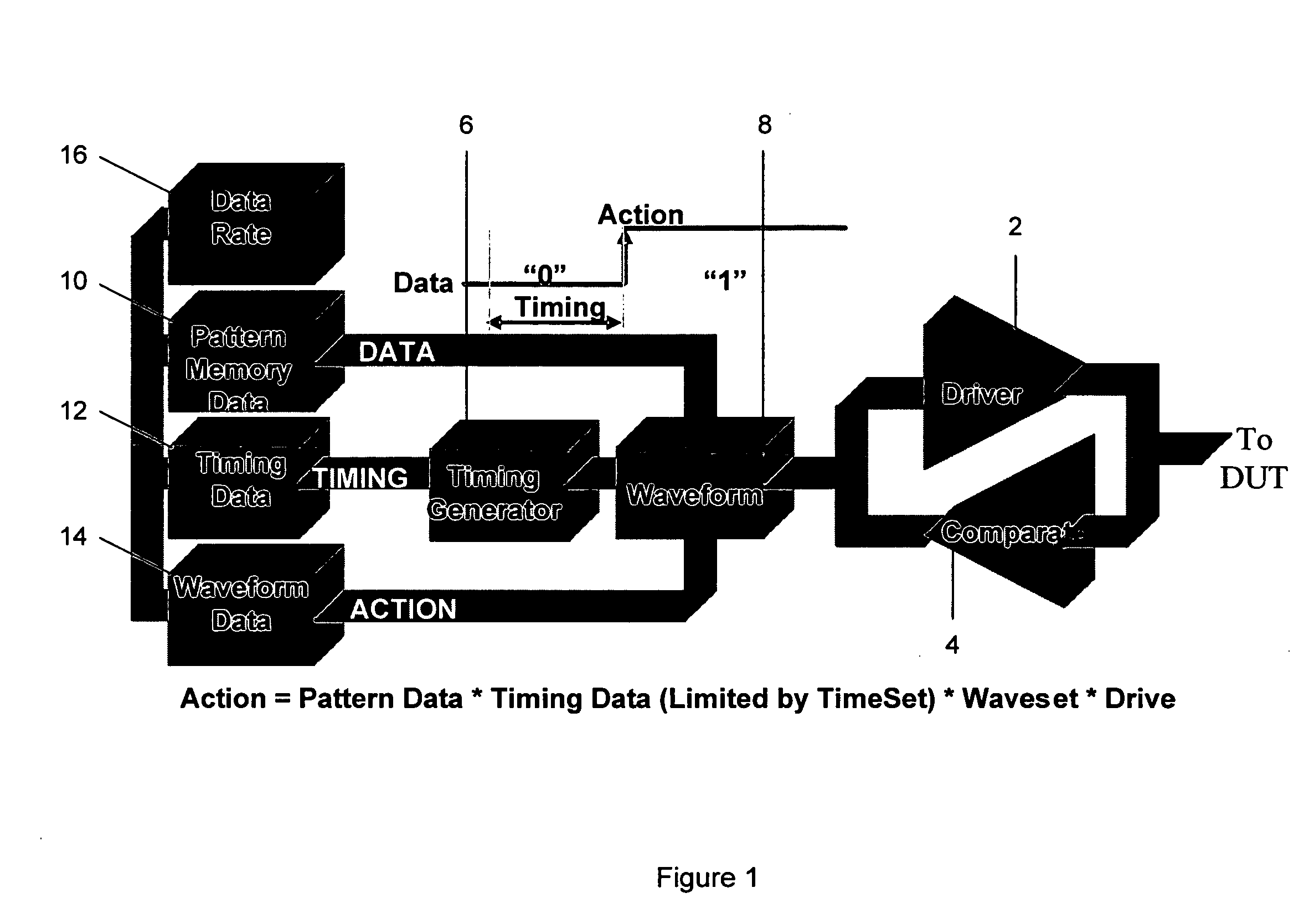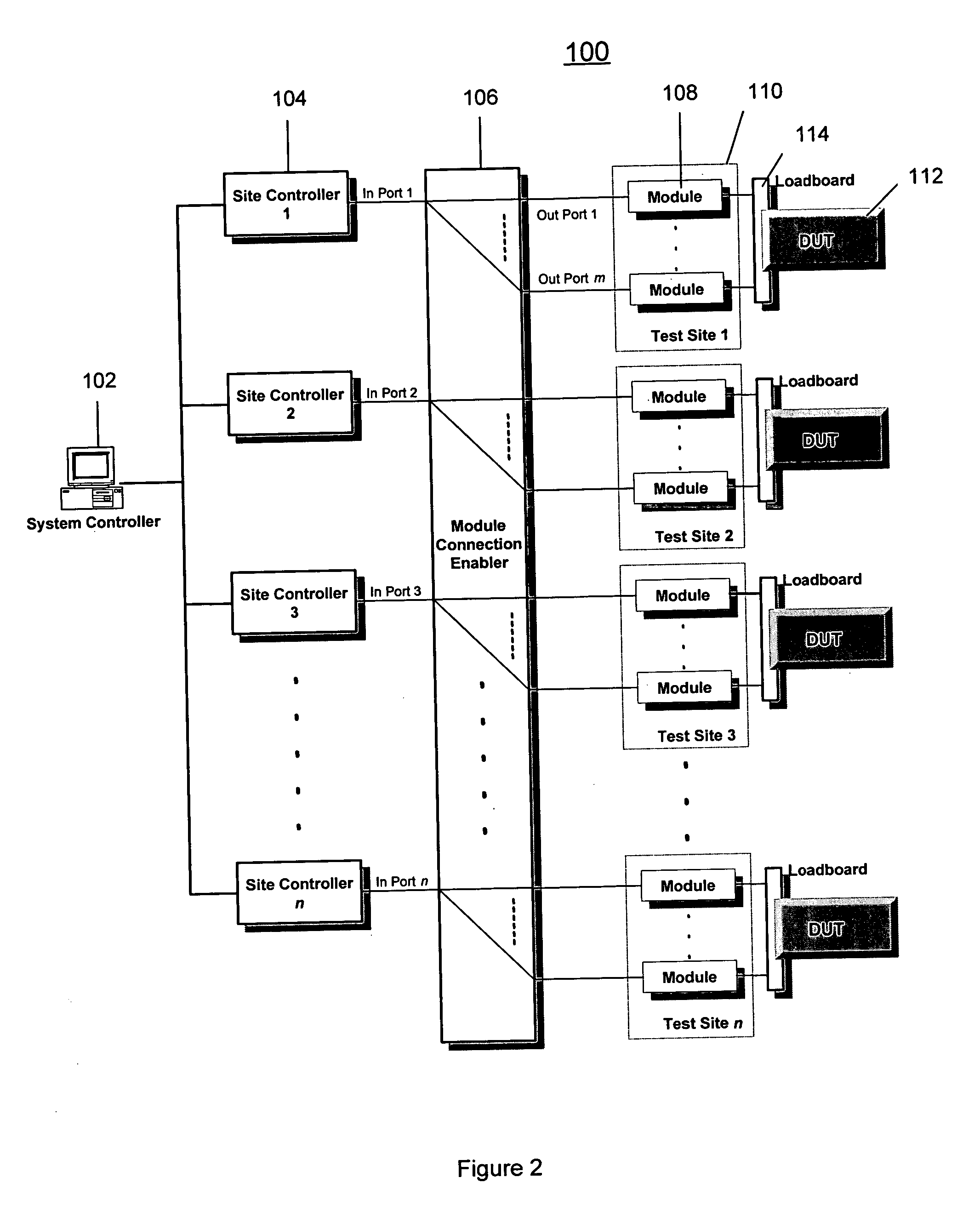Method and structure to develop a test program for semiconductor integrated circuits
a test program and integrated circuit technology, applied in the direction of testing circuits, fluid pressure measurement, instruments, etc., can solve the problems of inability to identify errors in the test program, and burdened test engineers with complex test system environment, so as to reduce the development time
- Summary
- Abstract
- Description
- Claims
- Application Information
AI Technical Summary
Benefits of technology
Problems solved by technology
Method used
Image
Examples
example 1
Use of BurstOff
[0897] This example illustrates BurstOff and PreBurst. Of particular emphasis is that BurstOff causes patterns to run singly in bursts that are one pattern long. Hence the PreBurst option still applies. The input pattern lists are as below:
Global A[BurstOff] [PreBurst pat_z]{Patq;PListB;Patr;Pats;Global C{Patt;PListD;};PListD;PListE;};Global B{Pat a;Pat b;};Global D [BurstOff]{Pat c;Pat d;};Global E{Pat e;};
[0898] The tree rooted at A may be represented in FIG. 8.
[0899] The execution sequence for this pattern is below. The | character indicates a burst break. This pattern list executes in 10 bursts, the first one having patterns z and q, and the last one with pattern e: [0900] z q|a b|z r|z s|t|c|d|c|d|e
[0901] Note the following about this execution sequence: [0902] 1. Since the BurstOff option on A is not inherited by B, the patterns a and b in B operate as a burst. [0903] 2. Since the PreBurst option on A is not inherited by B, the a and b in the burst by B is ...
example 2
Use of BurstOffDeep
[0906] This example illustrates the BurstOffDeep option. BurstOffDeep during pattern list definition affects nested definitions and referenced lists. However, PreBurst and PostBurst options are not inherited by nested and referenced lists. The example uses the same patterns A, B, C, D, E as in example 1, but the options are different: [0907] 5. Options on definition of A: [BurstOffDeep], [PreBurst z], [PostBurst y][0908] 6. No other options on any other node.
[0909] The execution sequence is as below. As earlier, the | character indicates a burst break. [0910] z q y|a|b|z r y|z s y|t|c|d|c|d|e
[0911] Note the following about this execution sequence: [0912] 1. PreBurst and PostBurst are not inherited by B, C, D, E. [0913] 2. BurstOffDeep is inherited by B, C, D, and E.
example 3
PreBurst and PostBurst Inhibition
[0914] Suppose now the pattern list tree of Example 1 is considered, where the options are: [0915] 1. Options on definition of A: [PreBurst x] [PostBurst y][0916] 2. Options on definition of C: [PreBurst x] [PostBurst z][0917] 3. No other options on any other node.
[0918] The execution sequence would be: [0919] x q a b r s t c d c d e y
[0920] The reasons why the “t c d” subsequence is not “x t c d z” are as follows: [0921] 1. The first x is inhibited since it is equal to the pre-burst option x that is associated with the current burst in effect. [0922] 2. The last z is inhibited since the PostBurst z is not inherited to D, and there is no pattern that is generated from C to which the z can be appended.
PUM
 Login to View More
Login to View More Abstract
Description
Claims
Application Information
 Login to View More
Login to View More - R&D
- Intellectual Property
- Life Sciences
- Materials
- Tech Scout
- Unparalleled Data Quality
- Higher Quality Content
- 60% Fewer Hallucinations
Browse by: Latest US Patents, China's latest patents, Technical Efficacy Thesaurus, Application Domain, Technology Topic, Popular Technical Reports.
© 2025 PatSnap. All rights reserved.Legal|Privacy policy|Modern Slavery Act Transparency Statement|Sitemap|About US| Contact US: help@patsnap.com



